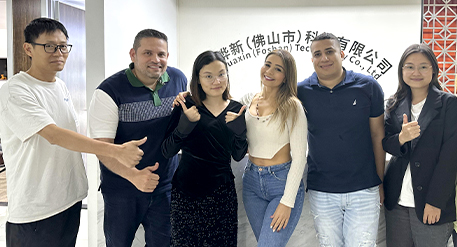
True Tone represents an innovation crafted by Apple to balance display shades under external light. As a result True Tone enhances devices by producing vivid and true tones regardless of lighting environment. Some users may find it easier on the eyes while utilizing True Tone across long durations, as it decreases eye strain. True Tone functionality resides in products such as iPhones, iPads, and Macs and it can be turned on or off according to individual choices.
- Situations noticing True Tone effects cover sunlit reading, screen work in shadowy rooms, and evening movie watching.
Technological Solutions that adapt your screen to surroundings
True Tone stands as a transformative system adjusting hue warmth by surroundings. It integrates devices sensing ambient brightness and fine-tunes blue emission correspondingly for a more smooth ocular presentation. This diminishes eye strain and enables better viewing over long durations. True Tone technology is included in several tools comprising smartphones, tablets, and monitors.
Smartphone Panel relative to iPhone Display: Main Contrasts
Despite many using “phone screen” and “iPhone display” interchangeably, clear distinctions arise between Android and iOS screens . Android displays convey numerous alternatives for size categories and resolution measures, whereas iPhones are distinguished by OLED panels. Differences also exist in types of panels used. Certain Android manufacturers employ AMOLED screens while Apple uses mainly LCD and OLED panels in their iPhones.
- Contrasts are apparent regarding palette richness and viewing extents
- Numerous Android variants employ increased refresh capabilities for agile rendering
- Overall, iPhone displays are recognized as brighter
Mechanism Behind True Tone on iPhone Devices
True Tone operates by customizing the color balance of iPhone displays reflective of ambient lighting. It permits more pleasing viewing by adjusting to lighting variations. When True Tone is activated, sensors in the iPhone measure ambient light and modify the screen’s color temperature to be calm in dusk lighting or vivid in sunny areas.
- What’s more, True Tone assists with soothing eyes and bettering vision
- Manage True Tone status inside Settings located at Display & Brightness
Lifelike Image Viewing
The screen adapts dynamically to light surroundings enabled by True Tone. This creates a more true visual experience, lessening eye tension facilitating appreciation of accurate content.
- Observe hues with increased clarity and precision
- Secure advanced resolution and clearer images
- Curtail eye stress during lengthy interactions
Is True Tone technology essential?
Amid technological progress, devices advance continuously. One feature gaining popularity is True Tone technology which automatically adjusts display color to ambient lighting, enhancing the visual experience to be more natural and pleasant. But is having a True Tone display really necessary? The answer depends on how you utilize your device and your specific needs.
- Those spending lengthy periods using displays find True Tone helpful in minimizing eye stress and boosting comfort
- Oppositely, casual device users dedicated to recreation may perceive decreased significance
In the end, the value of True Tone panels relates closely to one’s preferences and usage patterns. If you prioritize a more natural and comfortable viewing experience, this feature is worth considering when selecting your next device.
Positive and Negative Aspects of True Tone Solutions
True Tone constitutes a remarkable attribute modifying display warmth in harmony with surroundings. This can deliver eye-friendly display benefits chiefly during extended viewing. However, there are some limitations. Some users find True Tone may be too sensitive, causing sudden changes in color temperature.
- Exact color reproduction can be hindered in certain instances
- Not every light environment yields correct True Tone response
By and large, True Tone offers aid to long-duration display utilizers. Nonetheless, it is important to remain aware of its constraints.
Investigating Screens Offering True Tone
True Tone systems have rapidly altered how we perceive digital content on screens. This groundbreaking feature self-adapts the color temperature of your display to harmonize surrounding light. Consequently, True Tone supplements a more authentic viewing experience, reducing eye strain and improving color clarity. When contrasting screens with True Tone, consider factors such as contrast ratio to pick the best preference for your preferences.
- Further, True Tone can strengthen image clarity in certain settings.
- Conversely, not all True Tone-equipped displays are identical.
Excellent iPhones with True Tone Displays
To maximize visual quality, select iPhones with True Tone screen capabilities. The technology balances screen color automatically with surroundings for optimal comfort. Popular iPhone models with True pantallas para celulares Tone include Xs, 11, 12. These variants offer a large assortment of features and specifications to meet your needs.
- Affordable pricing options exist for True Tone iPhones
- Alongside pricing, True Tone screens aid in protecting user eyesight
Modifying True Tone on Your iPhone
Fine-tuning True Tone on your iPhone can optimize your visual experience by matching display color temperature to ambient lighting. To do this, go to "Settings" > "Brightness and Screen" and permit True Tone. In that same section, you can adjust True Tone levels according to your preferences.
- Take into account that True Tone excels in natural illumination
- Experiment with various settings until finding what suits your vision best
Evaluating True Tone: Genuine Differences in Experience?
Cutting-edge True Tone functions ensure elevated image fidelity. But does it really meet these expectations? To test whether True Tone genuinely changes the experience, we experimented with its function across a variety of devices and scenarios.
- Outcomes presented assist in evaluating True Tone’s critical role
Catch this report to learn if True Tone actually improves screen perception!
